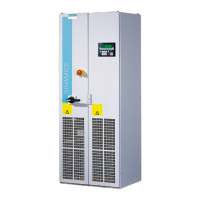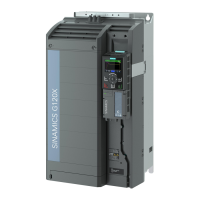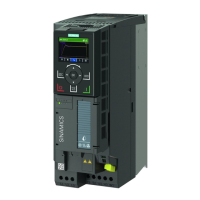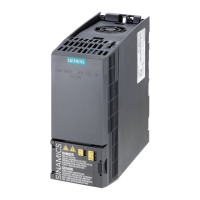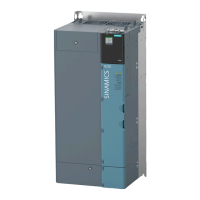8.28 Eciency optimization
Overview
The eciency optimization reduces the motor losses as far as possible.
Active eciency optimization has the following advantages:
• Lower energy costs
• Lower motor temperature rise
• Lower motor noise levels
Active eciency optimization has the following disadvantage:
• Longer acceleration times and more signicant speed dips during torque surges.
The disadvantage is only relevant when the motor must satisfy high requirements relating to the
dynamic performance. Even when eciency optimization is active, the converter closed-loop
motor control prevents the motor from stalling.
Requirement
Eciency optimization functions under the following preconditions:
• Operation with an induction motor
• Vector control is set in the converter.
Function description
'ULYHQPDFKLQH
,QYHUWHU
6SHHG6SHHG
VSHFLILHG9DULDEOH
)OX[
7RUTXH
Figure 8-77 Eciency optimization by changing the motor ux
The three variables that the converter can directly set, which dene eciency of an induction
motor, are speed, torque and ux.
However, in all applications, speed and torque are specied by the driven machine. As a
consequence, the remaining variable for the eciency optimization is the ux.
The converter has two dierent methods of optimizing the eciency.
Advanced commissioning
8.28 Eciency optimization
Distributed converter for SIMOGEAR geared motors
Operating Instructions, 10/2020, FW V4.7 SP13, A5E31298649B AL 337

